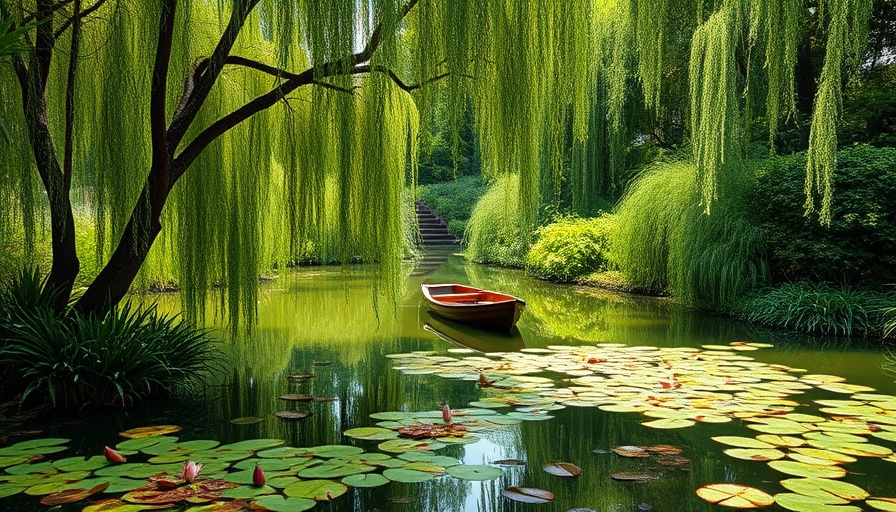
Unveiling the Beauty: Gardens Behind Famous Art
Gardens have long served as the muse for artists, offering an enchanting blend of color, light, and life that is hard to replicate on canvas. Famous artists like Claude Monet and Vincent Van Gogh drew deeply from the beauty of nature, transforming their own gardens into vibrant masterpieces. Visiting these gardens provides a rare opportunity to see the world through the eyes of these legendary figures. You can almost feel the brushstrokes of Impressionism lingering in the air as you walk their paths, offering insights into both their artistic processes and personal inspirations.
The Vibrancy of Monet’s Garden at Giverny
Perhaps one of the most iconic locations for garden lovers and art enthusiasts alike is Claude Monet's garden at Giverny, France. Originally nurtured by Monet himself starting in 1883, this garden not only shaped his famed Water Lilies series but also established a lasting legacy in the world of Impressionism.
The colors and light created within this lush garden have inspired millions, drawing them to experience the exact environment that influenced Monet's works. Special events like the "Giverny en Fleurs" festival or workshops dedicated to painting techniques further enhance the visitor experience, solidifying Giverny's status as a cultural beacon.
Van Gogh's Roots in Nature: A Journey Through Saint-Rémy
Another notable garden is the one at Saint-Paul-de-Mausole in Saint-Rémy-de-Provence, which captured the attention of Vincent Van Gogh. It is here that Van Gogh painted the breathtaking Irises, allowing visitors to delve into the mental and emotional landscapes that colored his work. The serene garden setting is a testament to the natural beauty that fueled Van Gogh's creativity.
Walking through these gardens, observers can understand why these two artists seemed to be in a constant communion with nature, and how this relationship profoundly influenced their work. The experience isn't just to stroll among flowers—it’s an invitation to witness history, to become part of the story that birthed some of the most famous works of art.
Why Gardens Are More Than Just Pretty Places
These gardens embody a rich tapestry of history and culture, representing the intersection where art meets nature. They serve as living museums, preserving the spirit of the artists while inviting new generations to engage with their legacy. Garden tours often reveal the careful planning that went into creating these spaces, from the selection of plants to the positioning of pathways, all designed to evoke a specific feeling or emotion.
In an era where digital experiences often overshadow real-world interactions, these gardens remind us of the power of nature as a source of inspiration and tranquility. They encourage visitors to slow down and appreciate the moment—a crucial step in truly understanding and experiencing art.
Impact and Legacy: A Call to Explore
The legacy of these gardens extends beyond mere aesthetics; they are a call to explore, connect, and appreciate the intricate dance between nature and artistry. For home and garden enthusiasts, recreating aspects of these famous gardens at home can serve as both an artistic challenge and a truly rewarding endeavor. The hands-on experience of planting and nurturing a garden can lead to a deeper appreciation of the painstaking effort artists like Monet and Van Gogh invested in their landscapes.
As we stand in these historical gardens, we are reminded that art is not just to be observed, but to be experienced fully—just like the very earth from which it originatively springs. So, grab your walking shoes and plan a visit to these mesmerizing gardens; it might just change the way you view art forever.
Explore Gardens That Inspired Iconic Works
Ready to immerse yourself in nature’s artistry? Whether dreaming of visiting Monet’s vibrant landscapes or stepping into Van Gogh's peaceful retreat, understanding their gardens adds so much more to the appreciation of their artwork. Check out detailed guides online and consider joining group tours for an insightful experience that balances education with enjoyment. #gardening #artappreciation
 Add Row
Add Row  Add
Add 




Write A Comment